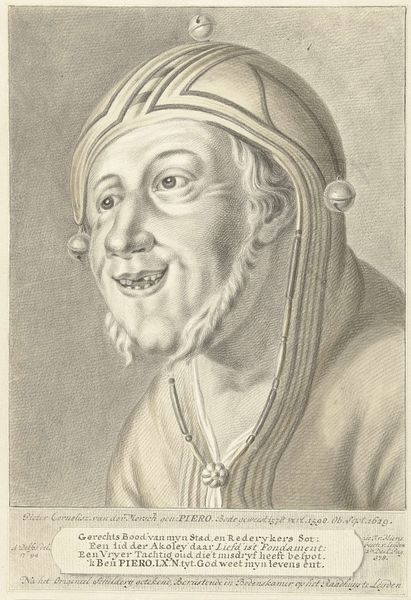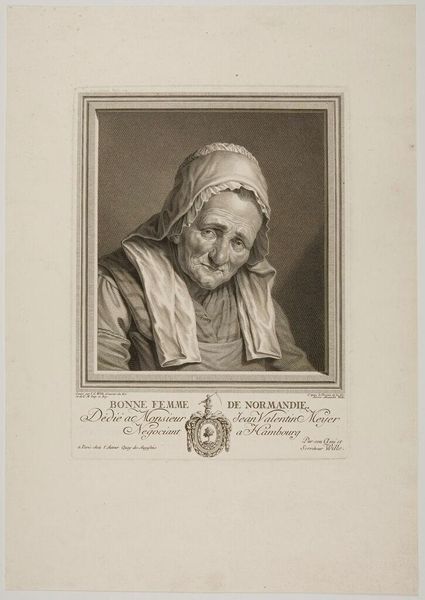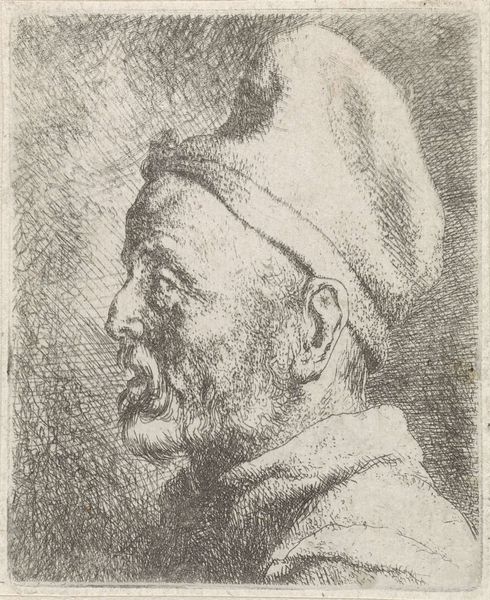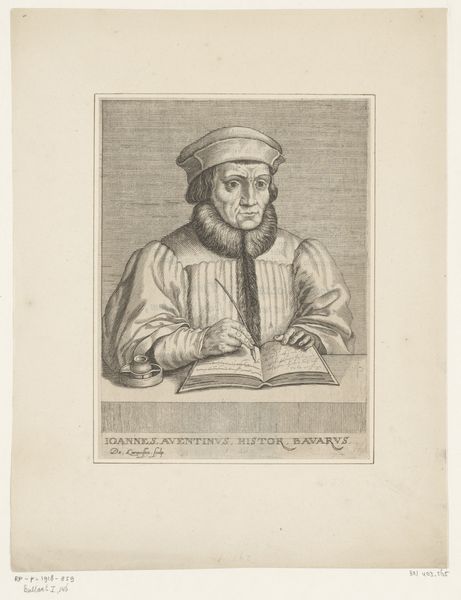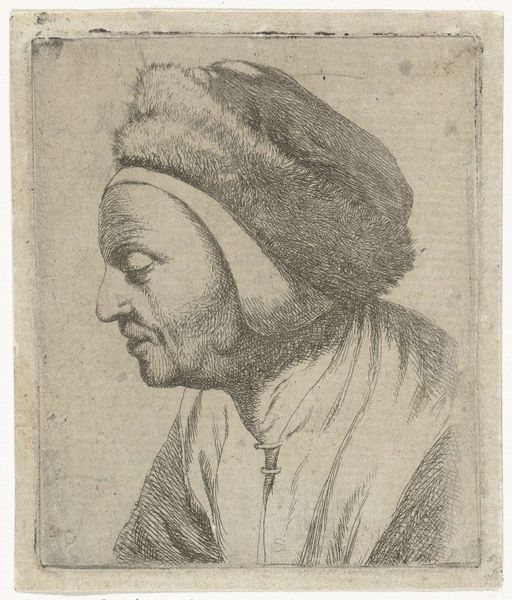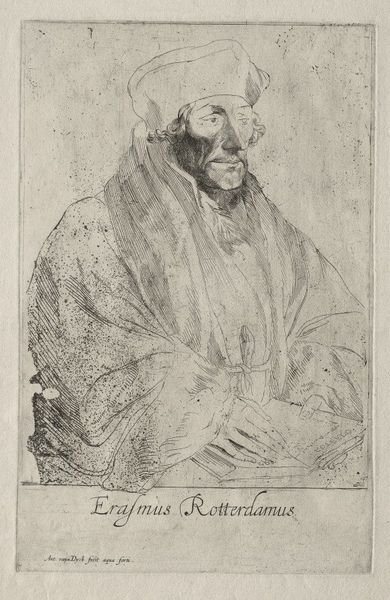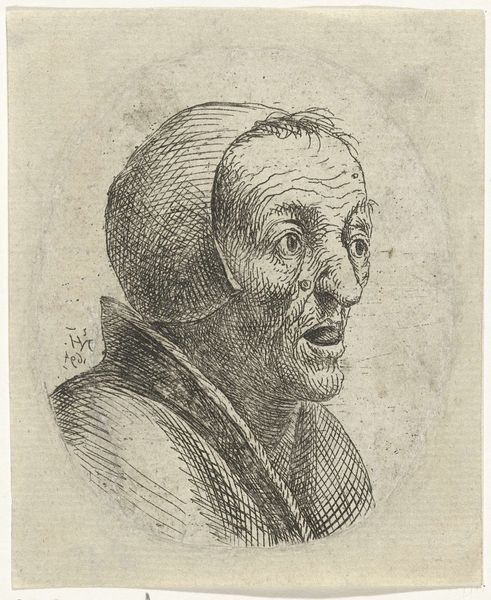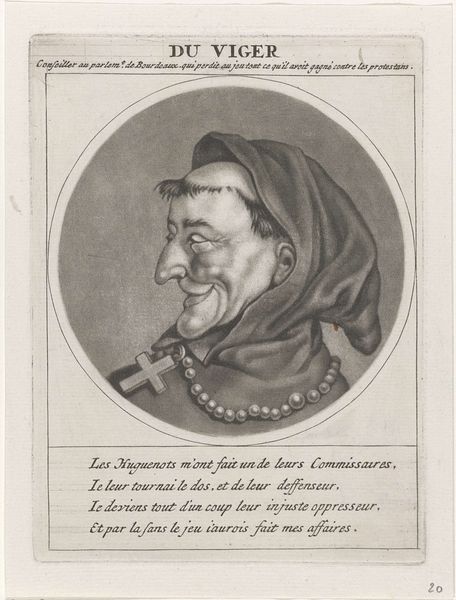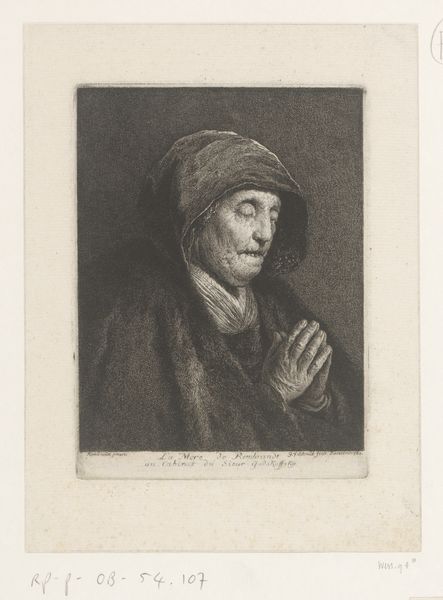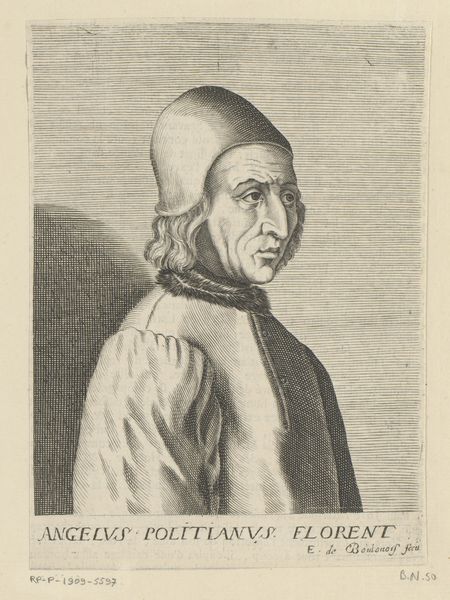
Dimensions: height 278 mm, width 174 mm
Copyright: Rijks Museum: Open Domain
Curator: So, let's discuss this captivating portrait of Pieter Cornelisz. van der Morsch, created between 1741 and 1820 by Abraham Delfos, currently housed at the Rijksmuseum. It's a graphite drawing on toned paper. Editor: Toned paper is a choice here. It really softens what could be quite a stark depiction, don't you think? There's something almost…humorous about it. It's hard to put my finger on why. Curator: Perhaps the contrast between his somewhat aged features and the almost whimsical bells on his turban? It's not your typical grand, flattering portrait of the era. Delfos has really captured a character here. Considering it's graphite, a readily available material even then, this work feels accessible. Did Delfos consider this art, or commercial output? Editor: I think we are supposed to ponder that exact question, particularly about what portraits even *mean*. It does highlight this tension that was developing at the time, doesn't it? Between the elite forms and the value and meaning of ‘ordinary’ craft. This one’s far more concerned with documenting a lived-in face than projecting status. Look at the line work—it’s quite light, almost hesitant. Like a fleeting memory caught on paper. And that paper. The use of toned paper adds so much mood, and also has that cheap feeling, almost as if anyone with this medium can achieve capturing character. Curator: Absolutely. The sitter's smile, or more accurately, a cheeky smirk, invites speculation about his personality, profession, or life. Also the writing at the bottom seems an interesting material addendum to the drawing - the paper gives added context. Editor: The bells! Those silly, jaunty bells undermine any sense of stuffiness and bring a celebratory spirit of revelry to the drawing. What statement is the artist making? Is he hinting at folly, social commentary, or poking fun? And how does the graphite allow this freedom? If Delfos had used inks would we feel the same way about our figure? It may be fair to assume that a sketch feels looser than a high brow material... Curator: Right! The relative low cost of graphite means you are perhaps, freed to go places formally that an expensive ink job, with its potential commissioner would ever go! I suppose both elements elevate each other, Delfos as an accessible and keen observer of real people. Editor: A man with bells on his head. Literally. It definitely sticks with you.
Comments
No comments
Be the first to comment and join the conversation on the ultimate creative platform.
